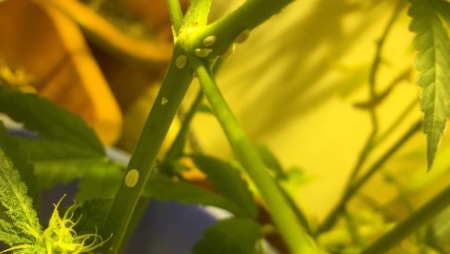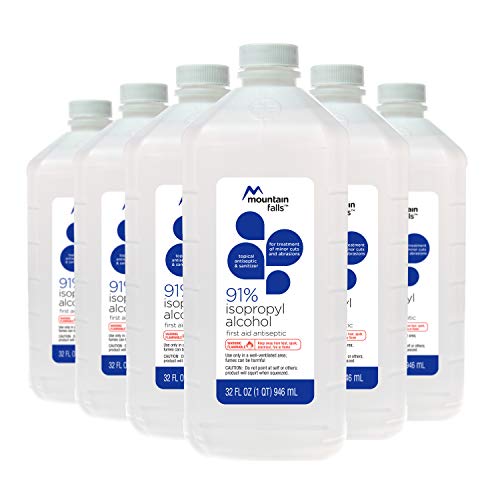How to get rid of Mealybugs: 11 way to kill Mealybugs on garden (Updated for 2023)
Mealybugs are hairy bugs found predominantly in a warm climate. These pests can be found virtually anywhere, in greenhouses, outdoor garden, or indoor garden, they suck plant and leave whitish sweet patches called honeydew which tend to draw other harmful insects and pest to your garden, causing even more damage to your garden. They use a part in their mouth known as the stylet to drive holes in the stem of the plant and suck substances known as sap.

In tiny numbers, these pests can be insignificant but left unchecked can cause substantial harm to your plant or garden.

How Do You Get Rid of Mealybugs?
If you predict you have mealybugs infestation on your garden, there are a couple of options available to you to properly eradicate them.
The severity of infestation will determine the mode of treatment; an extreme case scenario will require you to destroy the infected plant to avoid the spread of the outbreak.
Here are some other options to consider to help you get rid of them.
#1 Talstar One Termiticide Insecticide (Chemical – Editors’ Choice)
It contains bifenthrin 7.9% as its active ingredient and works well against Mealybugs on your outdoor gardening plants and microgreens in all conditions. Be sure to apply it consistently after 6-7 days interval by adding 2 ounces of Talstar One to 1 gallon of water and spraying on tender shoots and stem of the plants where Mealybugs are sticking with.
#2 Use Neem Oil (Natural – Editors’ Choice)
Neem oil is another substance repulsed by bugs. Also, Neem oil is known to cause a foul taste or smell if it is directly applied to your buds, so again, prevent it from having direct contact with your buds.
Similarly, there has been some research on the internet, which says Neem is harmful to human, apply with moderation. That out of the way, Neem is a natural fix that is effectively used to combat lots of bugs, mealybugs inclusive, you will need a pressure spray for you to apply the oil evenly on your plant.
#3 Reduce the number of bugs considerably with water spray
To start with, you can reduce the number of bugs from your plants by flushing the plants with a rush of water, or manually removing them. Flushing can be a way of reducing their number before you consider other treatment options to eliminate them.
#4 Insecticide Soap
When using soaps, it is essential to cover a large surface area of your garden because insecticidal soap doesn’t stay on your strains for long; so, it is vital to follow-up at close interval application to complete effectiveness. Soaps are safe to a large extent but avoid direct contact with your buds.
#5 Alcohol
Alcohol is another chemical known to dry the outer shell of bugs. Therefore, it can also be used to kill mealybugs. There’re a couple of options to use alcohol to kill mealybugs.
Option 1; In the case of small infestation. If the outbreak on your garden is starting or you have very few bugs on your garden, you can soak a piece of cotton in alcohol and use the cotton to touch the bugs one at a time.
Option 2; In the case of a severe infestation. If the infestation is severe you can create an alcohol-water spray and apply on your plants with a one-hand pressure sprayer, spray the bugs on the plant.
How to mix the Alcohol: Create an 8-part equal measurement of water and 2-part measurement of alcohol, meaning the ratio of water to alcohol should be 8:2. Create the mixture and use it to spray your plat, spray until there are no traces of the mealybugs. The alcohol spray aims to spray directly on the mealybugs to eradicate them. Alcohol is evanescence, meaning it evaporates when exposed to the atmosphere, you don’t have to worry about it leaving oil residue like substances Neem oil.
#6 Use of Predator Insects
Nature has created an interconnected dependence of species, and this can be used to our advantage. Some insects feed on mealybugs and harmless to our gardens. Insects like Lady Bugs, Lady Beetle, lacewings, all feed on mealybugs and cause no harm to our strains. With selective breeding, these bugs can be ordered to garden, and in no time, they start to attack the population of the mealybugs. The downside to ladybugs is they can’t be tamed, and they fly off in one or two days. Leaving the mealybugs to repopulate your garden again, cause of their rapid reproductive rate. However, they are a healthy option if you have very few occurrences, you should consider them as well.
#7 Use Diatomaceous Earth
Also referred to as DE, Diatomaceous earth is a naturally occurring substance made from sedimentary rock and is easily crushable. Diatomaceous earth is known to eradicate mealybugs or prevent future infestation. Naturally occurring, DE is a safe way to get rid of mealybugs. It acts by puncturing the exoskeleton of the bugs and absorbing the fluid in the body through osmotic movement; this is a safe way to also prevent against mealybugs because it poses no harm to you or your strain.
How to Prevent Mealybugs from infesting your garden
As the famous saying goes “prevention is better than cure,” this is also true for mealybugs, it is economical and less time consuming if you prevent the likelihood of mealybugs infesting your garden, rather than waiting for them to attack and then start to look for a way to get rid of them. Below are some preventive measures that make sure that you never host unwanted visits from these bad bugs again.
#8 Wash all Plant materials and garden tools after infestation
Mealybugs are small creatures and can stay inert in holes or crevices of plant pots, soil, and garden tools for as long as you let them, and reoccur when you replant your strain. So, after an infestation, replace all plant soil with fresh soil. Wash all plant pots and dip them in alcohol and garden tools
#9 Move plant pots to a new location
As soon as you want to start planting again, don’t plant in the spot as the former infestation. Take your pot to a new ground to prevent reoccurrence.
#10 Make sure ants are kept in check
Just as mentioned earlier ants and mealybugs have a symbiotic relationship. The more you expose your garden to ants, the more you predispose your garden to mealybug infestation.
#11 Don’t worry if you see some Mealybugs around
You can’t completely wipe off mealybugs from for garden in a couple of tries, so don’t worry when you see some around. The most important thing is that their population is being kept in check. If you kill all the adult mealybugs, the nymphs and eggs can be overlooked.
What do they look like
Mealybugs are fascinating creatures, given that their females and males have very different body parts and functions. To start with, both male and females look very different; the males possess wings which they use solely to find females to mate while the females don’t have wings, but have legs.

Mealybug Lifecycle
While the females live a total life span of approximately 28 to 30 days and get to 3mm in length; the male adult only lives for 3 to 6 days. Females can lay between 250 to 600 eggs within a cyst cotton-like, waxy substance which it attaches under leaves to protect them from predators. When egg-laying starts, it continues for two weeks; at the end of the egg-laying process, the female mealybug dies. Shortly after laying, hatching kicks in and can take up to 1 to 3 weeks, young nymphs are produced from the hatching process which migrates towards the marijuana plant to feed and cause further damage. In a year, mealybugs can have 13 to 16 generations depending on the species and weather conditions.
Female mealybugs feed by finding splits in your marijuana plant and stick themselves to that spot. Once rooted in the crevices, they create waxy-like substances to protect themselves while they feed on the plant’s saps. Female mealybugs share a symbiotic relationship with other insects, meaning they only move to gardens already infected by other insects, mostly ants, who act as soldiers, protecting the bugs against any external pest or predators while they feed continuously. In general, if there are no plants on your garden mealybugs won’t infest.
What attracts mealybugs?
You are wondering what draws them to gardens/farms? Mealybugs are attracted to soils and plants with high levels of nitrogen, in other words, the higher the nitrogen you introduce to your strain in the form of inorganic fertilizer the higher the possibility to get infected by mealybugs. So, moderately apply inorganic fertilizer to your strain to reduce the risk of infestation.
Are Mealybugs harmful to humans?
Mealybugs, just like other creatures, have different species. Most species of mealybugs have the potential of spreading a virus, but this doesn’t happen very often. Mealybugs don’t have teeth and therefore do not bite humans, but physical contact with some species can cause skin irritation. When you want to touch a mealybug, it is advisable to use protective gloves; they secrete some residue which is sticky and can be tricky to remove from clothing, to this end, is it suggested that all hands and clothing be washed immediately after contact to prevent possible damage.
Possible damage mealybugs can cause to humans is economic damage, destroying your produce and causing low yield. Infested strains can be quarantined to limit spread which adversely reduces overall yield and profit.
What Causes Mealybugs
Environmental factors: Just as I said earlier, you are most likely to attract mealybugs to your indoor or outdoor garden if you live in a tropical region, places which are warm at most times, this will mean in spring and summer seasons, this period predisposes you to a mealybug attack.
Mealybugs on your plants
Mealybugs are known to hide under your marijuana leaves, flower petals, and behind stems/bark, so it can be a bit hard to spot them in their early stages
Are Mealybugs that serious?
Mealybugs are as severe as a heart attack (metaphorically speaking). These bugs destroy strains by piercing the leaves, stems and sucking all the sap, causing your plant to wilt, leaves turn yellow and eventually die. Since saps usually contain lots of sugar and carbohydrates, mealybugs excrete what is called honeydew; this sticky waste can also cause further damage to your plants, causing mould growth on your leaves and attract other dangerous insect pests to your garden. But mealybugs don’t bite or spread any contagious diseases.
Symptoms of Mealybugs on my plant
Knowing if a mealybug attack has infected your plants, or they are in your garden?
Here are some signs on your marijuana plant to look out for:
– Presence of Ants
– Yellowing of Marijuana Leaves
– Whitish, Cotton-like substances on opening in you plant
– Whitish, Cotton-like substances on stem
– Dropping marijuana leaves
– Sudden Death of Plant
If left unchecked, mealybugs draw other predator insects to your garden, creating further problems. Ladybugs are predators of mealybugs; they infest a habitat already filled with mealybugs to feed on them, therefore solving the problem is very vital. You might think mother nature will come to rescue you with her army ladybugs, well, not after the mealybugs must have destroyed your garden.
Ants and Mealybugs
Ants and mealybugs coexist in a symbiotic relationship. A symbiotic relationship is a relationship where one species existence in the ecosystem is beneficial to the other species and vice versa. In the case of mealybugs, they excrete honeydew, a sweet, white, sticky, substance which the plants feed on, in return, the ants protect the mealybugs from external attacks or predators. Overtime time, the plant infested with mealybugs and ants with turn yellow, wilt and if left unchecked, may eventually die.
What do they eat?
Mealybugs feed by sticking themselves to any crevice on your marijuana plant, where it sucks the sap, the sap is liquid substances which transport essential nutrients and water to the leaves, flowers, fruits, and stem, ensuring the survival of the plant. Mealybugs intercept this sap which prevents the plant from gaining access to essential nutrient and water it requires for survival, when this happens it leads to yellowing of the leaves, wilting and eventual death.
To summarize
Mealybugs are minute, white-coated insects with soft bodies. They replicate very fast and cause real damage to your strains if not adequately controlled. Female mealybugs do most of the work while the males fly around looking for mates. It is possible to kill mealybugs, but most importantly, prevention is the best measure to combat these ravaging bugs.







